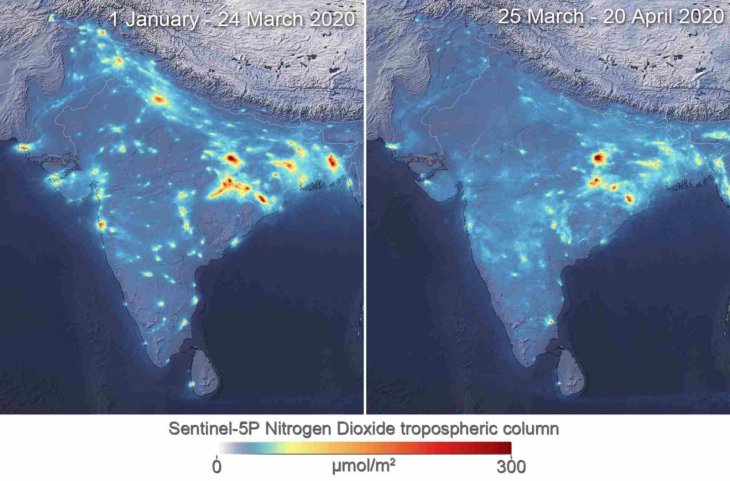India Lockdown Has Led To A 40-50% Decrease In The Air Pollution Levels
Harin - Apr 27, 2020

From March 24th to April 20th, India saw a considerable drop in terms of average nitrogen dioxide concentrations, leading to a decrease in pollution levels.
- This Over $100 Bottle Has Nothing But Fresh Air Inside
- Delhi Is The World’s Most Polluted Capital City For Three Years In A Row
- 54,000 People In Delhi Killed Last Year Because Of Air Pollution
The COVID-19 outbreak and the nationwide lockdown has added changes to people’s lifestyle. People need to work from home, kids can’t go outside to play and everything has gotten out of hand.
However, amid this chaotic, there is still something that is positive. As the pandemic hits pause on all activities globally, Mother Earth is healing. The Copernicus Sentinel-5P satellite recently captured images showing a significant drop in pollution in various Indian cities.

From March 24th to April 20th, India saw a considerable drop in terms of average nitrogen dioxide concentrations.
Compared to the same time last year, the India lockdown has led to a 40 to 50% decline in pollution levels.

Claus Zehner, mission manager at ESA’s Copernicus Sentinel-5P, said that the interesting thing about these new maps were the high nitrogen dioxide concentrations in northeast India, which was directly linked with the ongoing coal-fired power plants. The Vindhyachal Super Thermal Power Station, India’s largest power station, sees a 15% reduction in nitrogen dioxide concentrations compared to the same time the previous year.
Vehicles, industries, and power plants release nitrogen dioxide into the atmosphere, resulting in several respiratory issues. Ever since the lockdown was implemented, the levels of nitrogen dioxide have dropped significantly.

A Reuters report also revealed that March 2020 also experienced a 9.2% decrease in power consumption. Data from the Power System Operation Corporation Ltd. revealed that 100.2 billion kilowatt-hours were consumed in March 2020 compared to 110.33 billion kilowatt-hours of March 2019.
When making these assessments, weather variability was also an important factor that needed to be taken into account, Claus added. That was why the team had collected the data for a longer period of time. For this particular case, it was the decreased human activity that led to the drop in air pollution.
>>> Rare Full Arch Rainbow Appears On Delhi’s Clear Spring Sky Amid Lockdown
Featured Stories

Features - Jul 01, 2025
What Are The Fastest Passenger Vehicles Ever Created?

Features - Jun 25, 2025
Japan Hydrogen Breakthrough: Scientists Crack the Clean Energy Code with...

ICT News - Jun 25, 2025
AI Intimidation Tactics: CEOs Turn Flawed Technology Into Employee Fear Machine

Review - Jun 25, 2025
Windows 11 Problems: Is Microsoft's "Best" OS Actually Getting Worse?

Features - Jun 22, 2025
Telegram Founder Pavel Durov Plans to Split $14 Billion Fortune Among 106 Children

ICT News - Jun 22, 2025
Neuralink Telepathy Chip Enables Quadriplegic Rob Greiner to Control Games with...

Features - Jun 21, 2025
This Over $100 Bottle Has Nothing But Fresh Air Inside

Features - Jun 18, 2025
Best Mobile VPN Apps for Gaming 2025: Complete Guide

Features - Jun 18, 2025
A Math Formula Tells Us How Long Everything Will Live

Features - Jun 16, 2025
Comments
Sort by Newest | Popular